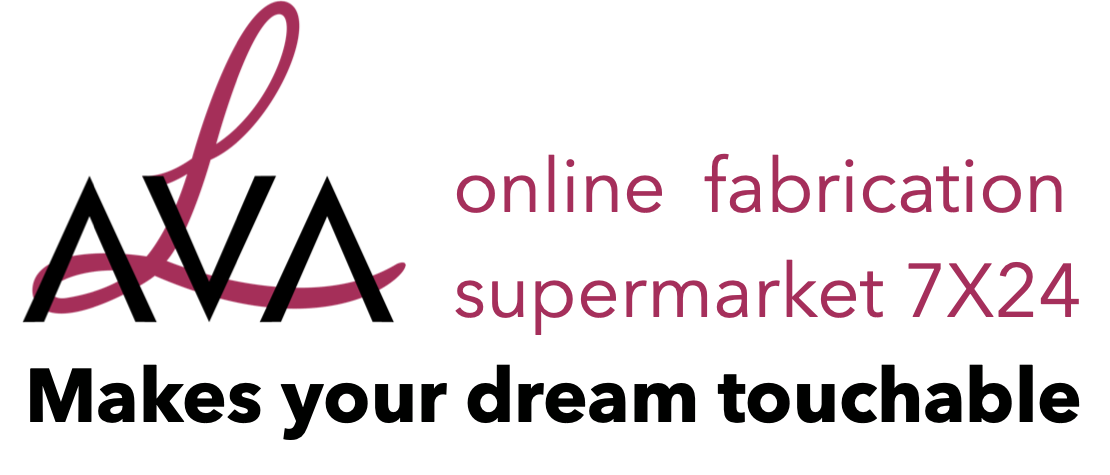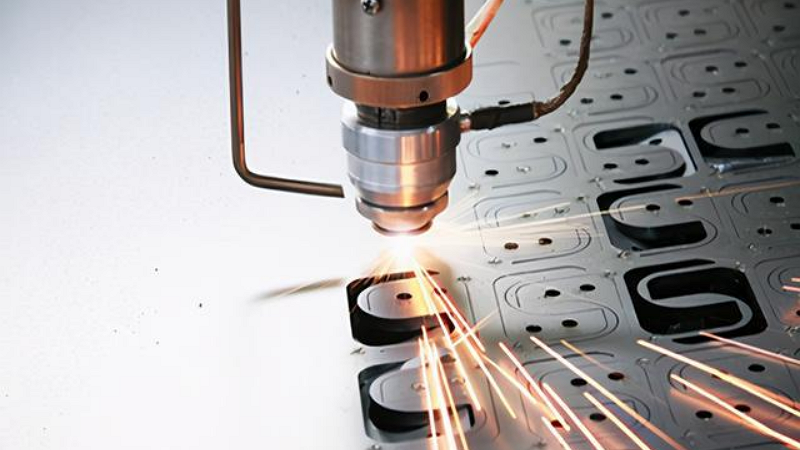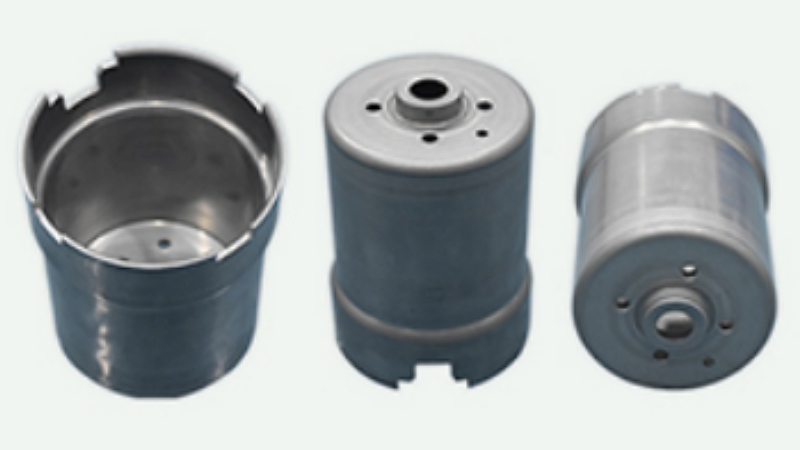Lava Blog
Introduction of rapid prototyping and production: 3D printing, CNC machining, Sheetmetal Stampling, Plastic Moulding and more…
Exploring TPU: The Versatile Material Revolutionizing 3D Printing Services
In the rapidly evolving landscape of 3D printing, the choice of materials plays a pivotal role in determining the functionality and versatility of printed objects. Among the myriad of materials available, Thermoplastic Polyurethane (TPU) has emerged as a game-changer, offering unique properties that have propelled it to the forefront of advanced 3D printing applications. This article delves into the world of TPU, uncovering what makes it such a prized material in 3D printing services. Introduction to TPU: A Hybrid Wonder TPU is a class of elastomers that combines the advantages of both plastics and rubber, making it incredibly versatile. It is essentially a thermoplastic material, meaning it can be melted and reshaped repeatedly without significant degradation, unlike thermoset plastics. This unique characteristic, paired with its elasticity, sets TPU apart and opens up a realm of possibilities for 3D printing enthusiasts and professionals alike. Key Properties of TPU in 3D Printing Elasticity and Flexibility: One of TPU’s most notable features is its high stretchability and flexibility. It can bend, twist, and compress without cracking or losing shape, making it ideal for producing parts that require a high degree of pliability, such as phone cases, wearables, and flexible hinges.Durability and Resistance: TPU offers excellent abrasion resistance, which is crucial for parts subjected to friction or regular wear. It is also resistant to oils, greases, and many chemicals, enhancing its longevity in various environments. This property is particularly valuable for industrial applications and outdoor use.Strength and Lightweight: Despite being flexible, TPU boasts impressive tensile strength, making it suitable for load-bearing applications. Its lightweight nature further adds to its appeal, especially in industries where weight reduction is paramount, like aerospace and automotive.Ease of Printing: TPU is compatible with most Fused Deposition Modeling (FDM) printers when used with the right settings. While it may require some adjustments to achieve optimal results due to its soft nature, successful prints result in objects with smooth surfaces and intricate details. Applications of TPU in 3D Printing Services The combination of TPU’s properties has led to its widespread adoption across various sectors: Athletic Gear: From customized insoles to flexible straps for sports equipment, TPU enables the creation of comfortable, form-fitting gear tailored to individual needs.Prototyping and End-use Parts: In industries requiring functional prototypes or end-use parts with specific mechanical properties, TPU offers a cost-effective solution compared to traditional manufacturing methods.Fashion and Accessories: Designers leverage TPU to create innovative wearable technology, jewelry, and fashion accessories that merge style with functionality.Industrial Components: Thanks to its durability and resistance, TPU is used to print seals, gaskets, and protective covers for machinery parts exposed to harsh conditions. Conclusion TPU has undeniably carved a niche for itself in the world of 3D printing services, offering a balance of flexibility, strength, and durability that is hard to match by other materials. As technology advances and more users explore its potential, we can expect TPU to play an increasingly vital role in pushing the boundaries of what is possible with additive manufacturing. Whether it’s enhancing product performance, enabling novel designs, or facilitating rapid prototyping, TPU stands as a testament to the transformative power of innovative materials in the modern era of 3D printing.
Has 3D printing broken through size limitations and printed parts larger than 2 meters?
With the increasing demand for large and complex constructions in modern manufacturing, traditional manufacturing processes…
Exploring PP (Polypropylene) in 3D Printing Services: The Versatile Choice Introduction
In the rapidly evolving landscape of 3D printing, material selection plays a pivotal role in determining the functionality, durability, and versatility of the final product. Among the myriad of materials available, Polypropylene (PP) has carved out a niche for itself as a preferred choice for numerous applications due to its unique combination of properties. This article delves into the world of PP in 3D printing services, uncovering why it stands as a versatile option for various industries, from automotive to consumer goods. Understanding Polypropylene (PP): Polypropylene, a thermoplastic polymer, is renowned for its exceptional toughness, lightweight nature, and chemical resistance. It possesses a high melting point, typically ranging between 130°C to 171°C, which makes it suitable for applications requiring heat resistance. Moreover, PP is semi-crystalline, granting it excellent fatigue resistance and flexibility, even at low temperatures. Advantages of PP in 3D Printing: Durability & Impact Resistance: One of the key selling points of PP in 3D printing is its high impact strength and durability. This feature makes it ideal for producing parts that need to withstand mechanical stress or occasional drops without cracking or breaking.Chemical Resistance: PP is inherently resistant to many chemicals, including acids, bases, and solvents, making it a preferred choice for components that come into contact with harsh substances.Lightweight: Its low density contributes to the production of lightweight parts, beneficial for applications where weight reduction is crucial, such as in automotive or aerospace industries.Flexibility: PP’s flexibility allows for the creation of parts that require bending or deformation without losing their integrity, like living hinges or snap-fit components.Recyclability: As an added environmental benefit, PP is highly recyclable, aligning with sustainability goals and circular economy principles. Challenges & Considerations: Despite its numerous advantages, working with PP in 3D printing also presents some challenges. PP’s low viscosity can lead to warping during the cooling process, requiring careful temperature control and possibly the use of a heated print bed. Additionally, achieving high-resolution prints with intricate details can be more challenging compared to other materials due to PP’s tendency to have a more pronounced layer line visibility. 3D Printing Techniques for PP: Several 3D printing technologies accommodate PP, including Fused Deposition Modeling (FDM), Selective Laser Sintering (SLS), and Multi Jet Fusion (MJF). Each method offers distinct advantages; for example, SLS and MJF are known for producing parts with better isotropic properties and more intricate geometries compared to FDM, albeit at a higher cost. Conclusion: Polypropylene, with its impressive balance of durability, chemical resistance, and flexibility, has become a go-to material in 3D printing services. Its ability to meet the demands of various industries underscores its versatility. While there are challenges associated with its use, advancements in 3D printing technology continue to mitigate these issues, expanding the possibilities for PP in tailored applications. As the quest for more sustainable and efficient manufacturing processes intensifies, PP’s role in 3D printing is poised to grow, offering innovative solutions across sectors.
Can 3D printing print micrometer sized parts? The answer is beyond imagination!
In today’s era of rapid technological development, 3D printing technology is undoubtedly a shining star…
Shapeways ceases operations and files for bankruptcy
Shapeways has ceased operations and filed for bankruptcy ‘after considering all strategic alternatives. The publicly listed…
Revolutionizing Healthcare-The Pioneering Advantages of 3D Printing in Medical Application
Introduction In the realm of healthcare, innovation is not just a buzzword. It’s a life saving force. Among the myriad of technological advancements reshaping medical applications, 3D printing, or additive manufacturing, stands as a beacon of transformative potential. This technology, by enabling the creation of intricate, personalized structures layer by layer from digital models, is pushing the boundaries of what is possible in surgical planning, prosthetics, tissue engineering, and more. This article delves into the remarkable advantages 3D printing brings to the medical field, illustrating its role as a game-changer in patient care. 1. Precision in Surgical Planning Gone are the days of relying solely on 2D imaging for surgical planning, 3D printing allows for the production of exact replicas of a patient’s organs or bones, offering surgeons a tangible, scale model to study and plan procedures. These models facilitate a deeper understanding of complex anatomical structures, improving surgical precision and reducing operation times. In neurosurgery, for instance, a 3D printed brain model can aid in navigating around delicate blood vessels, minimizing risks and enhancing outcomes. 2. Personalized Prosthetics and Orthotics Custom fit is no longer a luxury but a standard in prosthetics and orthotics thanks to 3D printing. Traditional methods often involve lengthy fitting processes and high costs. Conversely, 3D scanning combined with 3d printing technology can create perfectly tailored devices quickly and at a fraction of the cost. Patients, especially children who outgrow their devices rapidly, benefit from faster turnaround times and improved comfort, functionality, and aesthetics. 3. Advancements in Tissue Engineering and Regenerative Medicine Perhaps the most futuristic yet promising aspect of 3D printing lies in its potential for bioprinting – the fabrication of living tissues and even organs. Researchers are making strides in using bioinks, composed of living cells and biomaterials, to print structures like skin, cartilage, and even heart tissue. This breakthrough holds the key to addressing organ transplant waiting lists, as well as facilitating drug testing and disease modeling on realistic biological tissues. 4. Education and Training The tactile nature of 3D-printed anatomical models is revolutionizing medical education. Students and professionals alike can now study detailed replicas, enhancing their understanding of human anatomy beyond textbooks and computer simulations. This hands-on learning experience fosters better spatial awareness and surgical skills, preparing the next generation of healthcare providers for real-life surgical scenarios. 5. Cost-Efficiency and Accessibility While initial setup costs can be high, 3D printing in the long run promotes cost-effectiveness by reducing waste, enabling on-demand production, and facilitating local manufacturing of medical equipment. This is particularly impactful in remote areas or developing countries where access to specialized medical devices can be limited. By decentralizing production, 3D printing can bridge healthcare gaps and improve global health equity. Conclusion 3D printing is not merely an incremental improvement in medical technology. It is a paradigm shift. Its ability to personalize treatment, enhance surgical precision, push the frontiers of regenerative medicine, revolutionize education, and promote accessibility, underscores its status as a cornerstone of modern healthcare. As technology continues to evolve, we can only anticipate further innovations that will redefine what is achievable in healing and restoring human health. The future of medicine, quite literally, is being printed before our eyes.
Steam smoothing: an effective surface treatment process in 3D printing
As the demand for 3D printed parts increases, achieving a high quality surface finish has become essential. Therefore, post-processing of 3D printed objects is very important to enhance aesthetics and mechanical properties. Steam smoothing is an effective option for achieving professional quality results by resolving common problems with visible plies and rough surfaces in 3D printing. What is steam smoothing in 3D printing? Vapor smoothing is a finishing technique for 3D printing that involves exposing the printing component to an evaporating solvent. Also known as “chemical steam smoothing”, “steam polishing”, or “steam fusion”, this process helps eliminate rough surfaces and unsightly layer lines printed out in 3D. The chemical vapors used in this process react with the material surface, causing the material to melt and partially dissolve, resulting in a smoother surface. Using this technology,3Dprinted parts provide a smooth, shiny surface that looks more professional. Steam smoothing can be seen as an excellent finishing option that adds significant value to 3D printing. The technology is widely used in the automotive and aerospace industries, where parts must be as smooth and perfect as possible for optimal function and aesthetics. How does steam smoothing work? Steam smoothing is an efficient and effective method of achieving a smooth surface finish on a variety of materials without removing any material. It uses finishing agents and controlled chemical melting to achieve the desired results. Maintaining proper temperature and pressure control during this process is essential to achieve the desired results while avoiding any damage to the workpiece. The following is a step-by-step guide on how the fully automatic smoothing process works: Place the workpiece in a sealed chamber with finishing agent (typically FA 326). This finishing agent is usually used for various plastic materials, but different finishing agents can be used depending on the material being processed.Place the workpiece in a smoothing chamber and heat the reagent to a certain temperature to create steam around the part. Maintaining temperature and pressure control is essential to ensure uniform steam distribution on the surface.Vapour adheres to the part surface to form a controlled chemical melt. This melting reduces the peaks and valleys of the surface by liquefaction and redistribution of the material, resulting in a smoother surface.Chemical melting also increases the gloss and gloss of the material. The degree of gloss enhancement depends on the processing parameters and the finishing agent.Once the reagent has completed its work, the smoothing chamber is heated to remove the vapors and finishing agent and then collected in drums. The workpiece is free from residues and no material is removed during this process.After finishing, the workpiece may be subjected to a secondary treatment such as staining, painting or any other surface treatment. Technology and material types available Vapor smoothing is widely used in a variety of 3D printing technologies, polymers and elastomers. This technology can be applied to a variety of 3D printing materials, most commonly PA 12 and PA 11. Vapor melt after-treatment techniques can be combined with staining to obtain smooth, colored parts. Benefits of steam smoothing 3D printing has revolutionized manufacturing to produce complex parts with complex geometries. However, with the development of technology, improving the surface finish of printing components remains a challenge. This is where this post-processing technique significantly enhances the surface effect of 3D printed parts. Its main advantages are as follows. Improved surface finish…
Finishing of the 3D Printed Parts
At present, 3D printing technology has been applied in many fields. Most 3D printed products…
3D Printing Technologies Overview
1.What is 3D Printing or Additive Manufacturing? The objects produced by 3D printing processes can…
3D Printing Soft Material Parts
With the development of 3D printing technology, new materials and technologies continue to appear. More…
Laser Cutting Introduction
This is a high precision CNC process that can be used to cut, etch, engrave…
Deep Drawing Introduction
In this cold metal forming process, the part is made by a punch that forces…












